Journey to Space capsule for space tourists by Priestmangoode
A capsule that will float passengers to the edge of space and offer views of the Earth's curvature has been designed by British studio Priestmangoode (+ movie).
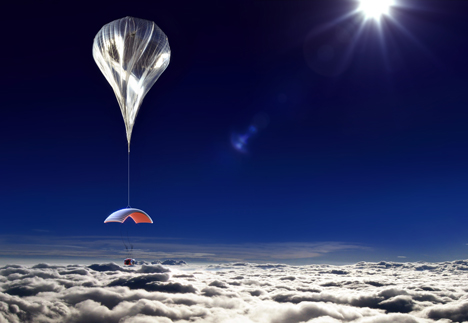
Developed for the World View programme set up by US space development corporation Paragon, Priestmangoode's lightweight pressurised vessel will be lifted by a helium balloon to take six passengers and two crew members to the periphery of the atmosphere.
"When you think about going near the edge of space," Priestmangoode director Nigel Goode told Dezeen, "you think of some sort of Star Wars-type craft, something which has direction and speed but obviously this is very, very different. It would look very odd to have a craft stuck at the bottom of a balloon so the shape was really designed for strength and for maximum visibility for the people on board."
The journey to the edge of space will take around an hour and a half, then the vehicle will spend from two to six hours at the 30-kilometre altitude so passengers can take in the views of the Earth below, the curve of its surface and the blackness of space beyond.
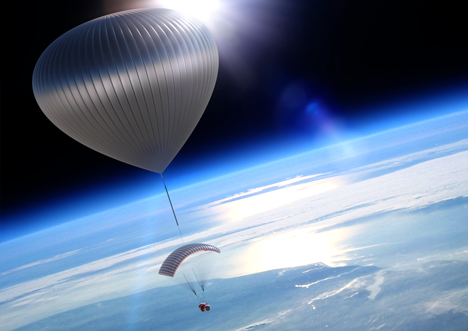
The World View concept aims to create a luxury voyage instead of a thrill ride. Space suits won't be needed in the pressurised cabin, which will provide a breathable atmosphere.
"You can travel up there, spend a bit of time in the capsule moving around at that altitude and be able to enjoy the leisurely experience," said Goode.
Large circular windows on each of the four sides are divided into segments to reduce the pressure on the surfaces. A small transparent dome will also allow views out into space above.
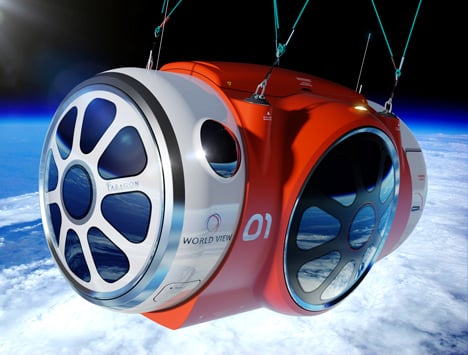
Attached to the pod by suspension cables, the polyethylene helium balloon used for propulsion will expand as the helium density decreases while it rises to its target altitude.
A steerable parafoil will control the 20 to 40-minute descent before the capsule lands intact on the ground using deployable landing gear.
The vertical take-off greatly decreases the amount of infrastructure needed to launch, compared to the Virgin Galactic craft that take-off using a runway, and the vehicle can be transported on a specially designed trailer that doubles as a platform for liftoff.
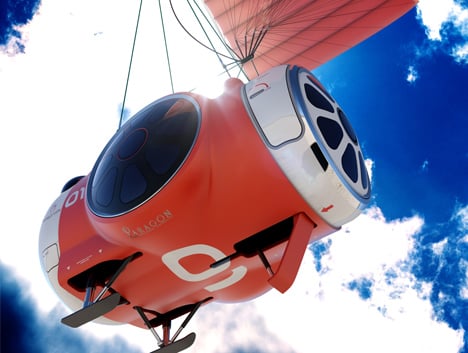
This means that capsules could depart from any location around the world that has clear, dry weather, and the initial flights will leave. "I think it will open up space travel for an awful lot of people," said Goode.
A World View trip is estimated to cost $75,000 (£47,000) per person, less than a third of Virgin Galactic's $250,000 (£156,000) price tag.
Goode told us that project is not just for tourism, but can also be used for scientific research: "There are lots of opportunities on the craft to conduct experiments. We've got measuring equipment and things like that so other scientific research can be done as well."
The next step is to design the interior, which Goode envisages to be arranged so two people will face each window.
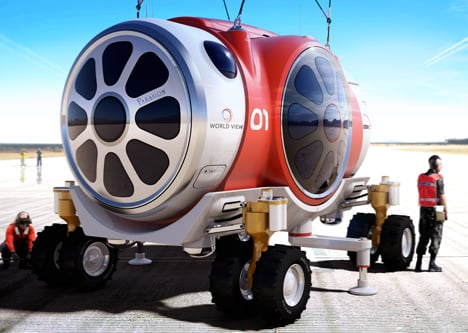
After testing and approval, the first flights are planned to take place in three years time.
Goode also told us that his company has been working with Paragon on a vessel to send a two-person crew on a 501-day flight around Mars and back.
Here's more information about the Journey to Space project from Priestmangoode:
Priestmangoode designs journey to the edge of space
Priestmangoode, the leading global travel and transport design consultancy, is delighted to be working with the Paragon Space Development Corporation on their World View project to take passengers on balloon flights to the edge of the Earth. The London and China based studio has designed a concept capsule, which will take passengers to the edge of space where they will be able to observe the curvature of the Earth.
Nigel Goode, director at Priestmangoode says: "This is a dream project to work on. It's incredibly exciting to be part of this nascent industry. Inspired by our work designing luxury aircraft interiors, our design vision focuses on enhancing comfort onboard the capsule to create a truly transformative human experience."
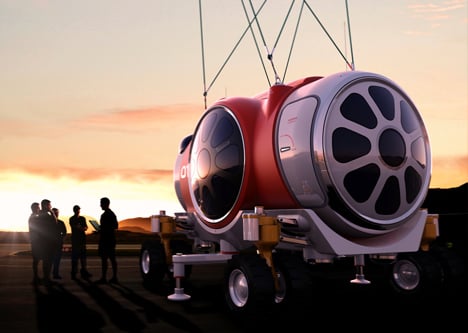
Goode continues: "We have been working closely with Jane Poynter and Taber MacCallum, who founded the Paragon Space Development Corporation. They are both at the forefront of aerospace technology and brought us in for our expertise designing luxury travel experiences. It's been an inspiring process to combine our different skills to define the experience of premium space travel."
World View plans the flights of the capsule, which can carry eight people, to over 30 kilometres (98,425 feet) by means of a helium balloon. The ascent will take between one and a half to two hours. The capsule will then spend between two and six hours at the intended altitude of 30 kilometres, before returning to Earth over the course of 20-40 minutes.
The extended length of time spent in space was a significant driver for the design of the vessel. As Goode explains: "The idea of space travel naturally brings to mind traditional rocket ships and the aerodynamic forms they command.

"However, the World View experience is not about speed, it's about enjoying a once in a lifetime journey. Our unique advantage is that our body of work over the last 25 years, from product design to aircraft interiors and hotels, means we always design with the user at the heart. We didn’t just want to design a vessel, we wanted to define what commercial space travel could be. We wanted to create a stylish, elegant, luxurious environment for this unique experience. It was all about finding the right balance between form and function."
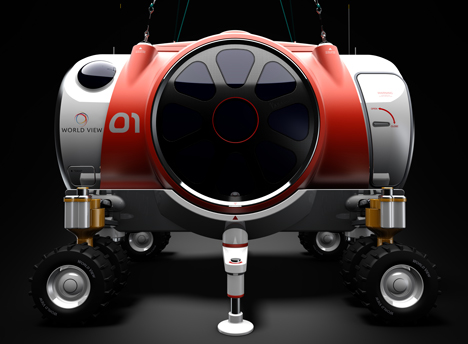
The capsule's sturdy form was designed to enhance passenger safety. The key design features are the large panoramic windows constructed from an array of small high pressure units. Goode continues" "It was crucial to find a way to maximise the viewing windows. In our initial design meetings with the World View team, they talked about wanting to start the journey before dawn, so that as passengers rose up to space, they would be able to observe the sunrise, the curvature of the Earth, the thin blue atmosphere and the blackness of space. The windows we designed offer the maximum amount of viewing space for passengers, whilst meeting stringent safety requirements. There is also a cupola viewing dome for unrestricted view of the Earth's curvature."
Other features include a lightweight structure, permanently deployed parafoil to maximise safety, science capsule attached to the top of the exterior for potential scientific data readings, deployable landing gear (skids), a reserve parachute for safety and a unique trailer unit for ground transportation and launching platform.
Earlier this year, Priestmangoode visualised another project for the Paragon Space Development Corporation. Inspiration Mars will see a two-person crew travel on a unique orbital journey to Mars and back to Earth in only 501 days. The historic journey will see the two passengers fly within 100 miles around the Red Planet and return to Earth safely.